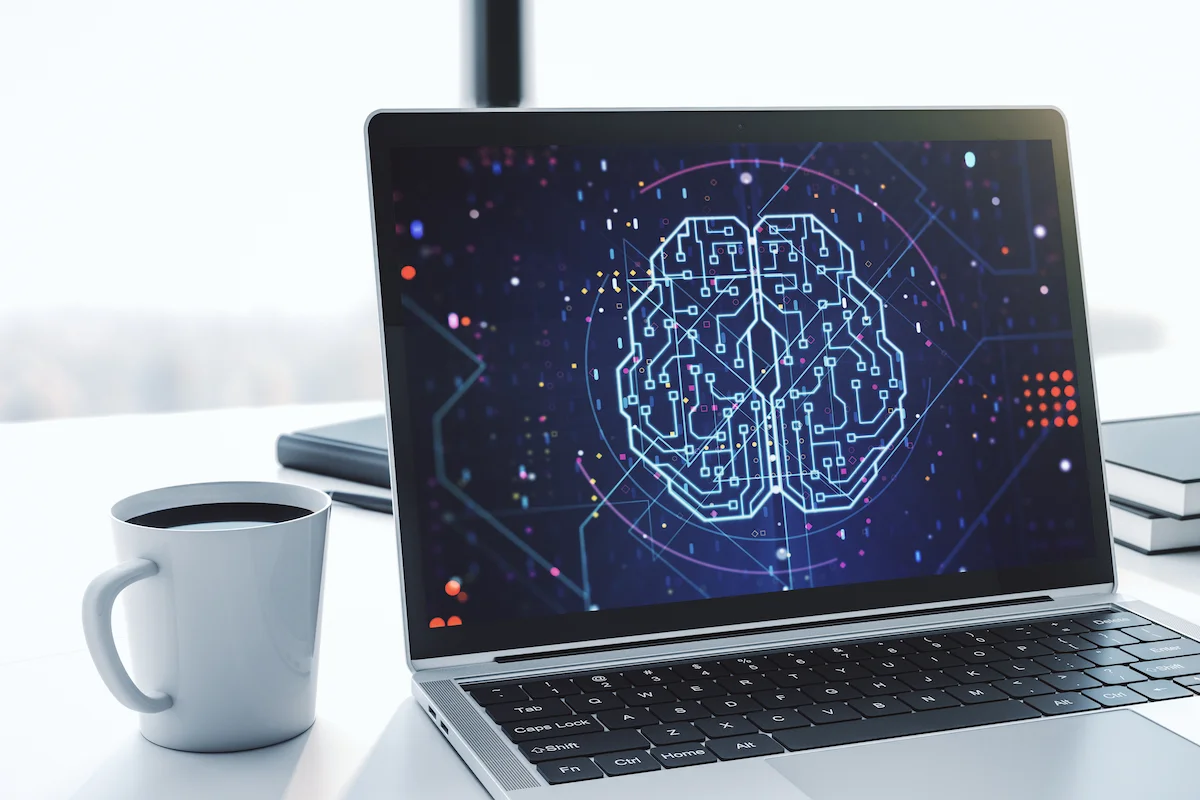Definition
The term “theory of mind” was initially proposed by Premack and Woodruff (1978) and refers to the individual’s ability to infer mental states of others such as intentions, dispositions and beliefs.
Evaluation of the theory of the mind with schizophrenia
Ruiz, García and Fuentes (2006) point out that generally the tests aimed at measuring the theory of the mind are usually presented in the form of comic strips on which certain questions are subsequently asked. The purpose of these questions is to evaluate two types of false beliefs in relation to history.
Types of questions
1. First order questions
The first-order questions are intended to assess the extent to which the evaluated subject is able to predict the behavior of a character who acts guided by an erroneous belief, Sally and Anne (Baron-Cohen, Leslie and Frith, 1985) and Cigarretes (Happè, 1994) would be examples of stories that pose first-order questions.
2. Second Order Questions
Second order questions assess the extent to which the subject being evaluated is able to predict the false belief that one of the characters has about the belief of another character, Ice-Cream Van Store (Baron-Cohen, 1989) and Burglar Store (Happè and Frith, 1994) are tests created for asking second-order questions.
Hinting Task
One of the most widely used instruments in psychosis research is the Hinting Task (Corcoran, Mercer and Frith, 1995) which comprises ten short stories in which there is an interaction between two characters. All these stories end with a hint of one character to the other. The objective of the task is that, after the reading of the different stories by the evaluator, the subject tries to explain what the character that emits the indirect response tries to say.
Try NeuronUP free for 7 days
You can work with our activities, design sessions, or provide remote rehabilitation
Faux Pas Task
The Faux Pas Task (Stone, Baron-Cohen, Calder and Keane, 1998) presents the subject with ten stories in which one of the characters makes a mistake by saying something that is socially embarrassing. After presenting each of the stories to the subject, the subject is asked to detect the socially embarrassing situation and assess how the other character may have felt.
The test requires the subject’s ability to detect false beliefs in the case of the person who makes the socially embarrassing mistake, and to infer emotional states depending on how the character who received the verbalization may have felt.
Eye- Task
Eye- Task (Baron-Cohen, Wheelwright, Hill, Raste and Plumb, 2001), consists of showing the participants several photographs in which only the eyes of a subject are shown, asking them to infer what the person may be feeling or thinking. To make this assessment, the participant can only choose one of the four words offered as options.
Mind Theory Deficits in Schizophrenia
The differences found in performance in this area by patients diagnosed with schizophrenia and control subjects is substantial, as highlighted by two meta-analyses finding effect sizes between medium (d=0.69) and large (d=1.25) for these differences (Bora, Yucel and Pantelis, 2009; Sprong, Schothorst, Vos, Hox and Van Engeland, 2007).
Research Hypotheses
Historically, an attempt has been made to study the extent to which the symptoms of schizophrenia determine the deficits that people diagnosed with this disease theoretically present in their minds.
Some research bets on the hypothesis that the subject has to present a theory of mind without deficits of any kind in order to develop delirious persecutory ideas (Drury, Robinson and Birchwood, 1998; Watson, Blenner-Hasset and Charlton, 2000).
Others point out that patients who show negative or disorganized symptomatology have never developed a theory of mind, an aspect that can be observed in the worst performance they show when faced with tasks that demand the use of this capacity (Garety and Freeman, 1999; Greig, Bryson and Bell, 2004).
Research Objectives
A current objective in the study of deficits in mind theory in schizophrenia is to identify whether these deficits resemble a trait or state of the disease, as it would help resolve the question of whether they are exclusively associated with the symptoms of the disease.
It should be noted that the bulk of the research that has been carried out in this sense indicates that these deficits would constitute a trait of the disease itself (Herold, Tenyi, Lenard and Trixler, 2002; Irani et al, 2006; Janssen, Krabbendam, Jolles and Van Os, 2003; Penn, Sanna and Roberts 2008).
Although studies such as that of Bora et al (2009) show that, although these deficits seem to remain present in any phase of the disease, it is not known to what extent neurocognitive problems in working memory and executive functions, or the residual symptomatology itself, would be the factors that really contribute to the maintenance of these.
It therefore seems necessary to continue investigating in this direction before being able to affirm that these deficits constitute a feature of the disease.
Neurological vision
At the neurological level, Rodríguez and Touriño (2010) point out that in neuroimaging studies with healthy subjects it has been observed that some cerebral areas such as the prefrontal area, the amygdala or the lower parietal lobe, are activated during the performance of tasks in which the theory of the mind has to be put into practice (Brunet, Sarfati, Hardy-Bayle and Decety, 2000; 2003). In the case of patients diagnosed with schizophrenia, a decrease in activation has been found in the right prefrontal cortex and in the left lower frontal gyrus during the performance of such tasks (Adolphs, 2002; Brunet et al., 2000).
References
- Adolphs, R. (2002). Neural systems for recognizing emotion. Current Opinion in Neurobiology, 12(2), 1-9
- Baron- Cohen, S. (1989). The autistic child´s theory of mind: a case of specific developmental delay. Journal of Child Psychology and Psychiatry, 30(2), 285-297
- Baron- Cohen, S., Leslie, A. M., y Frith, U. (1985). Does the autistic child have a theory of mind? Cognition, 21(1), 37-46
- Baron‐Cohen, S., Wheelwright, S., Hill, J., Raste, Y., y Plumb, I. (2001). The “Reading the mind in the eyes” test revised version: a study with normal adults, and adults with asperger syndrome or high‐functioning autism. Journal of Child Psychology and Psychiatry, 42(2), 241-251.
- Bora, E., Yucel, M., y Pantelis, C. (2009). Theory of mind impairment in schizophrenia: meta- analysis. Schizophrenia Research, 109 (1-3), 1-9
- Brunet, E., Sarfati, Y., Hardy-Bayle, M. C., y Decety, J. (2000). PET investigation of the attribution of intentions with nonverbal task. Neuroimage, 11(2), 157-166
- Brunet, E., Sarfati, Y., Hardy-Bayle, M. C. y Decety, J. (2003). Abnormalities of brain function during a nonverbal theory of mind task in schizophrenia. Neuropsychologia, 41(12), 1574-1582.
- Corcoran, R., Mercer, G., y Frith, C. D. (1995). Schizophrenia, symptomatology and social inference: investigating “theory of mind” in people with schizophrenia. Schizophrenia Research, 17(1), 5-13.
- Drury, V. M., Robinson, E. J., y Birchwood, M. (1998). Theory of mind skills during an acute episode of psychosis and following recovery. Psychological Medicine, 28(5), 1101-1112
- Garety, P. A., y Freeman, D. (1999). Cognitive approaches to delusions: a critical review of theories and evidence. British Journal of Clinical Psychology, 38(2), 113-154.
- Greig, T. C., Bryson, G. J., y Bell, M. D. (2004). Theory of mind performance in schizophrenia: diagnostic, symptom and neuropsychological correlates. Journal of Nervous and Mental Disease, 192(1), 12-18
- Happè, F. (1994). An advanced test of theory of mind: understanding of story characters thoughts and feelings by able autistics, mentally handicapped and normal children and adults. Journal of Autism and Developmental Disorders, 24(2), 129-154
- Happè, F., y Frith, U. (1994). Theory of mind in autism. En E.Schloper y G.Mesivob (Eds). Learning and Cognition in Autism (pp.177-197). NuevaYork, NY: Plenum Press
- Herold, R., Tenyi, T., Lenard, K., y Trixler, M. (2002). Theory of mind deficit in people with schizophrenia during remission. Psychological Medicine, 32(6), 1125-1129
- Irani, F., Platek, S. M., Panyavin, I. S., Calkins, M. E., Kohler, C., Siegel, S. J.,… y Gur, R. C. (2006). Self-face recognition and theory of mind in patients with schizophrenia and first-degree relatives. Schizophrenia Research, 88(1-3), 151-160.
- Janssen, I., Krabbendam, L., Jolles, J., y Van Os, J. (2003). Alterations in theory of mind in patients with schizophrenia and non-psychotic relatives. Acta Psychiatrica Scandinavica, 108(2), 110-117
- Penn, D. L., Sanna, L. J., y Roberts, D. L. (2008). Social Cognition in schizophrenia: an overview. Schizophrenia Bulletin, 34(3), 408-411
- Premack, D., y Woodruff, G. (1978). Does the chimpanzee have a theory of mind? Behavioral and Brain Sciences, 1(4), 515-526.
- Rodríguez, J. A., y Touriño, R. (2010). Cognición social en la esquizofrenia: una revisión del concepto. Archivos de Psiquiatría, 73, 9-12
- Ruiz, J. C., García, S., y Fuentes, I. (2006). La relevancia de la cognición social en la esquizofrenia. Apuntes de Psicología, 24(1-3), 137-155
- Sprong, M., Schothorst, P., Vos, E., Hox, J., y Van Engeland, H. (2007). Theory of mind in schizophrenia: meta- analysis. British Journal of Psychiatry, 191(1), 5-13.
- Stone, V. E., Baron-Cohen, S., Calder, A. W., y Keane, J. (1998). Impairments in social cognition following orbitofrontal or amygdale damage. Society for Neuroscience Abstracts, 24, 1176
- Watson, F., Blenner-Hasset, R. C., y Charlton, B. G. (2000). Theory of mind, persecutory delusions and the somatic marker mechanism. Cognitive Neuropsychiatry, 5(3), 161-174.
Digitization in neuropsychological assessment
Marcos Ríos-Lago highlights the advancements, opportunities, and limitations of technology in the field of neuropsychological assessment, with a critical and integrative perspective. The omnipresence of technology in our lives Nowadays, we are surrounded by technology. Just a few days ago, we experienced a blackout that left us without electricity for several hours, allowing us to…
Continue Reading Digitization in neuropsychological assessment
Sleep neuroscience: how rest affects brain recovery and cognitive performance
To celebrate Brain Week 2025, this article explores how sleep affects cognitive function and how professionals can integrate this knowledge into their clinical practices. Introduction Sleep plays a fundamental role in brain health, directly influencing neuronal recovery and cognitive performance. In the field of neuropsychology, understanding the relationship between rest and brain processes is key…
Continue Reading Sleep neuroscience: how rest affects brain recovery and cognitive performance
Neuropsychology of alcohol
Alcohol consumption is one of the most common forms of substance use worldwide, with profound neuropsychological implications. In this article, psychologist Rafael A. Salas Muriel explains, from a neuropsychological perspective, what alcohol is, its effects on the brain, the risks associated with its consumption, and how neuropsychological assessment and intervention can contribute to the treatment…
Clinical neuropsychology in prematurity and neurodevelopment
In this post, the psychologist and international expert on Alzheimer’s and other dementias, Cristian Francisco Liébanas Vega, talks about prematurity and neuropsychological rehabilitation in premature babies. Prematurity is a serious problem for both the newborn (NB) and their family, as it is associated with high morbidity at birth and a high risk of future disabilities.…
Continue Reading Clinical neuropsychology in prematurity and neurodevelopment
Clinical neuropsychology in the evaluation and preparation for awake neurosurgery
In this post, psychologist Cristian Francisco Liébanas Vega talks about the intraoperative brain mapping technique and its contributions to disease diagnosis. Intraoperative brain mapping is a specialized technique used during brain surgery to optimize the balance between tumor removal and preservation of important brain functions. This technique is mainly used in patients with tumors or…
Continue Reading Clinical neuropsychology in the evaluation and preparation for awake neurosurgery
The importance of working on executive functions to improve emotional self-regulation in young people
The psychologist Analí Naranjo García explores in this article the importance of focusing on the development of executive functions as a means to improve emotional self-regulation in children and adolescents, analyzing both the biological basis of these abilities and their influence on the self-regulation process. To better understand this concept, we can imagine our body…







 Sluggish Cognitive Tempo: disorder or ‘domain’?
Sluggish Cognitive Tempo: disorder or ‘domain’?
Leave a Reply